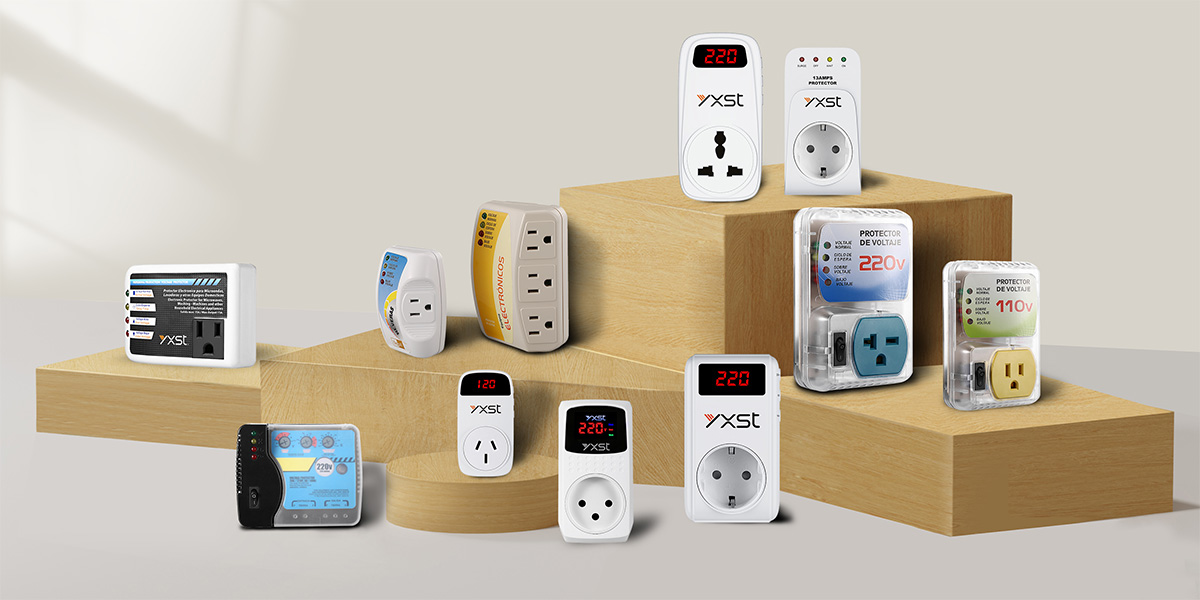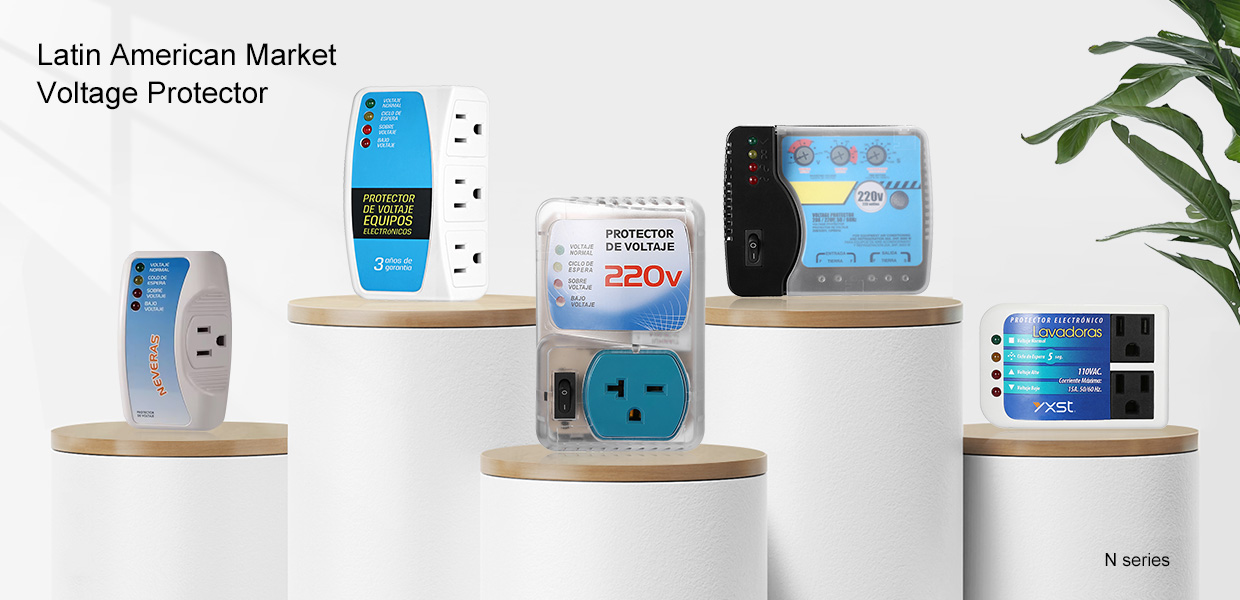With the improvement of people’s living standards, nowadays, we should not only consider the protection from overload, short circuits, and leakage but also start to consider the protection of more and more electrical appliances in the home. Many friends ask which one should be installed in the home, automatic voltage protector or under-voltage protector? This article discusses the functions and differences between automatic voltage protectors and over-voltage protectors in detail so that everyone can understand their different functions and usage.

Functions of automatic voltage protector
● Overload protection: monitor the current, and when the current exceeds the set value, automatically cut off the power supply to prevent the equipment from being damaged by overload.
● Short circuit protection: in the event of a short circuit, quickly cut off the power supply to protect the circuit and equipment.
● Delay function: after detecting abnormal voltage, there is usually a short delay to avoid false operation.
● Status indication: provide an LED indicator or display screen to display the working status and fault information of the equipment in real-time.
● Manual reset function: after troubleshooting, you can manually reset and restore the power supply.
Functions of overvoltage and undervoltage protectors
Alarm function: Some protectors are equipped with an alarm system. When overvoltage or undervoltage occurs, an alarm will sound to alert the user.
Automatic reset: After the voltage returns to normal, the protector can automatically reconnect the power supply to reduce manual intervention.
Improve equipment reliability: By monitoring voltage changes in real-time, the protector can significantly improve the safety and stability of the equipment and extend its service life.
Similarities between automatic voltage protectors and overvoltage and Undervoltage protectors
● Protection function: Both are designed to protect electrical equipment from damage caused by abnormal voltage (too high or too low). When the voltage exceeds the set range, the power supply is automatically cut off to prevent equipment damage.

● Voltage monitoring: Both can monitor the voltage in real-time and can detect voltage changes in time.
● Automatic power cut-off: When abnormal voltage is detected, both can automatically cut off the power supply to protect the equipment.
Differences between automatic voltage protectors and overvoltage and Undervoltage protectors
★ Functional range:
Automatic voltage protectors: Usually have a wider range of functions, in addition to overvoltage and undervoltage protection, they may also include surge protection functions.
Overvoltage and undervoltage protector: Mainly focuses on overvoltage and undervoltage protection, and the function is relatively simple.
★ Reset method:
Automatic voltage protector: May have an automatic reset function, and will automatically reconnect the power supply after the voltage returns to normal.
Overvoltage and Undervoltage Protector: Some models may require manual reset, especially in serious fault conditions.
★ Application occasions:
Application areas of automatic voltage protector:
Computers and servers: Protect sensitive computer equipment and servers from voltage fluctuations to ensure their stable operation.

Household appliances: High-power appliances such as air conditioners, refrigerators, and washing machines to ensure that they operate within a safe voltage range.
Use scenarios of overvoltage and undervoltage protectors.
- Home circuits: Widely used in home electrical systems to protect home appliances such as TVs and microwave ovens from voltage anomalies.
- Small industrial equipment: Used for small mechanical equipment and power tools to avoid failures caused by voltage problems.
- Power supply system: Used in transformers and distribution boxes to protect downstream equipment from damage caused by voltage fluctuations.
- Lighting system: Used in commercial lighting and street lighting to ensure that the power supply can be cut off in time when the voltage is abnormal.
How to choose AVP and over-voltage and under-voltage protectors
When choosing automatic voltage protectors and over-voltage and under-voltage protectors, you can consider the following aspects:
→ Equipment requirements
- Equipment type: If you need to protect high-precision equipment or equipment with strict voltage requirements, it is recommended that you choose an automatic voltage protector.
- Power size: Choose a protector of appropriate specifications according to the power of the protected equipment.
→ Functional requirements
- Protection function: If only overvoltage and undervoltage protection are required, overvoltage and Undervoltage protectors can meet the needs; if additional functions such as surge protection are necessary, automatic voltage protectors should be selected.
- Alarm function: If real-time monitoring and alarm prompts are required, choose equipment with an alarm function.
→ Working environment
- Environmental conditions: Consider the temperature, humidity, and whether there is special electromagnetic interference in the use environment, and choose the appropriate protection level.
Installation location: Whether the equipment is used indoors or outdoors affects its protection level and durability.
→ Cost budget
- Price: Overvoltage and undervoltage protectors are usually cheaper, while automatic voltage protectors have more comprehensive functions and may be more expensive. Choose the right product according to your budget.
→ Brand and quality
- Brand reputation: Choose products from well-known brands to ensure their quality and after-sales service.
- Technical support: Check whether the manufacturer provides good technical support and warranty services.
→ Installation and maintenance
- Installation difficulty: Some protectors may require professional installation, considering the convenience of maintenance and replacement.
- Ease of operation: User-friendly devices are more convenient to use.
By comprehensively considering equipment requirements, functional requirements, working environment, cost budget, brand and quality, and installation and maintenance factors, you can choose the most suitable automatic voltage protector or over-voltage and under-voltage protector to ensure safe and stable operation of the equipment.
If you are in an area with frequent lightning, because lightning is a natural disaster of force majeure, it is recommended that you install an automatic voltage protector to reduce the economic losses caused.




